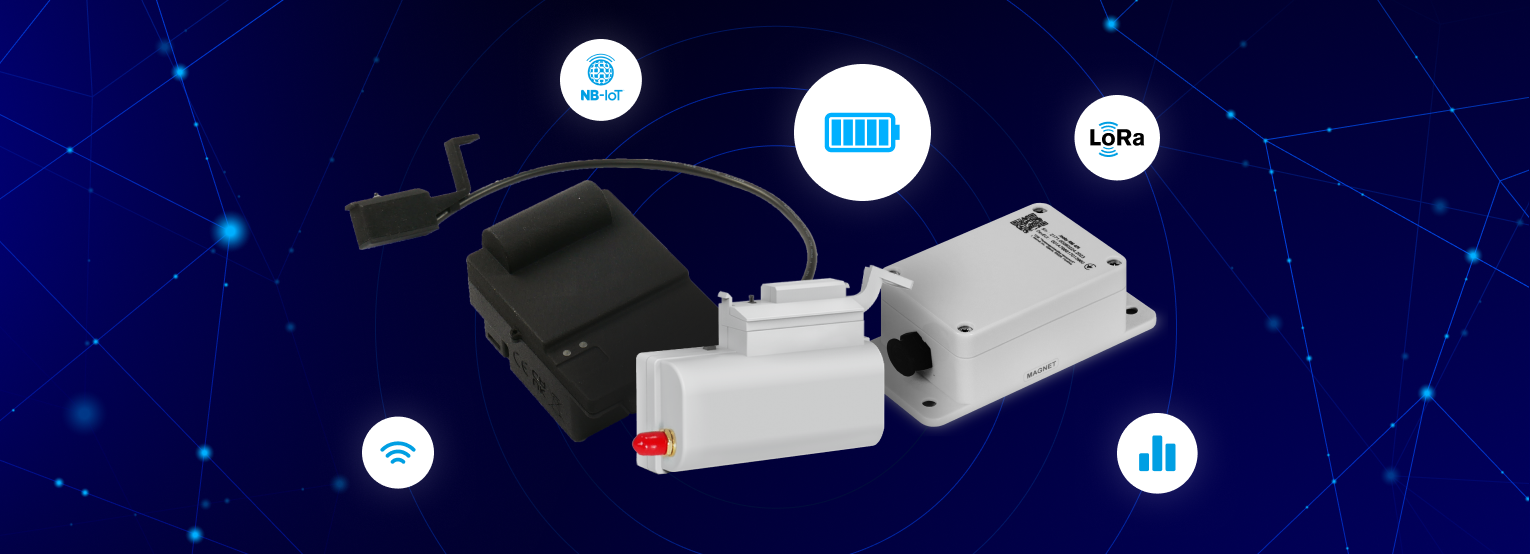In the era of digitalization of utility services, remote data collection has become the standard for modern networks. Long-life smart meters with LoRaWAN and NB-IoT connectivity ensure reliable communication, minimize the need for manual servicing, and reduce operational costs.
However, behind the seamless operation of these devices lies a critical factor—the battery. NB-IoT battery lifespan directly affects project ROI and overall system stability.
So how can you achieve 10–15 years of autonomous meter operation? The answer lies not only in choosing the right battery but in comprehensive energy consumption management.
In this article, we’ll explore key approaches and technological solutions such as ultra-low-power electronics that help extend device life. We’ll also explain why battery lifecycle management is a strategic priority for utility providers, developers, and municipalities.
Why Battery Life Is Critical for IoT Meters
LoRaWAN battery optimization matters because every on-site visit for battery replacement means additional costs: transportation, labor time, and access coordination. In large-scale deployments involving thousands of devices, maintenance expenses can exceed the initial investment in hardware.
Moreover, the battery determines the reliability of the entire system. If the meter loses power, data stops flowing into the monitoring platform, leading to inaccurate reporting, billing risks, and potential disputes with consumers. That’s why manufacturers and integrators strive to guarantee long battery life to minimize interventions throughout the device’s lifecycle.
Factors Affecting Energy Consumption
A device’s energy usage is shaped by both hardware and software characteristics. The most significant factor in smart metering power consumption is the frequency of data transmission. The more often the meter sends packets, the faster the battery drains. Similarly, repeated connection attempts caused by poor coverage also increase energy consumption.
The communication protocol plays an important role. LoRaWAN offers ultra-low power consumption for periodic transmissions, whereas NB-IoT, operating on cellular networks, requires higher power for establishing connections but can compensate with optimized sleep modes. Aside from battery-saving communication protocols, other influences include ambient temperature, battery capacity, board architecture, and firmware quality.
Optimization Strategies: Software-Level Solutions
To extend battery life, manufacturers employ energy-saving algorithms. One key method is adaptive data transmission frequency, where the device adjusts how often it sends packets based on consumption patterns or signal stability. For instance, under normal conditions, energy-efficient IoT meters might transmit data once per day, while in emergencies it could increase the frequency to several times per hour.
Another important tool towards battery replacement reduction is sleep mode management. Modern microcontrollers allow the device to remain in deep sleep most of the time, activating only for measurements and data transmission. When the duty cycle is properly configured, power consumption can drop dramatically—sometimes by an order of magnitude—critical for achieving 10–15 years of battery life.
Hardware Foundation: From Battery to Radio Module
Even the most advanced firmware cannot compensate for weak hardware. For meters with a long lifecycle, lithium-thionyl chloride (Li-SOCl₂) batteries are commonly used due to their low self-discharge and high energy density. Their service life can reach 15–20 years under proper operating conditions.
The quality of the radio module is equally important for optimizing sensor battery usage. Modules with dynamic power control help minimize energy usage in areas with strong signal coverage. Component compatibility matters too—a poorly optimized power circuit or low-grade capacitors can negate all energy-saving efforts.
Lifecycle Management: Analytics and Predictive Control
Even with perfect optimization of low-power IoT devices, monitoring battery health is essential. This is where built-in charge monitoring systems and IoT platform analytics come into play. Modern meters can transmit battery voltage and transmission cycle counts, enabling lifespan prediction and proactive maintenance planning.
Predictive battery maintenance and analytics helps utility companies prevent unexpected outages and schedule replacements with minimal costs. This approach not only extends IoT device longevity but also builds customer trust by ensuring transparency and stable service.
Extending battery life in LoRaWAN and NB-IoT meters is a multi-faceted challenge involving careful battery selection, software optimization, and continuous monitoring. Only with a holistic approach to NB-IoT power consumption strategies can companies achieve the promised 10–15 years of autonomous operation and reduce the TCO (Total Cost of Ownership) of smart metering systems.
For developers, municipalities, and utility providers, remote device energy management and battery performance monitoring are not just technical matters but operational advantages that define the economic efficiency and reliability of digital infrastructure.
 386
386




